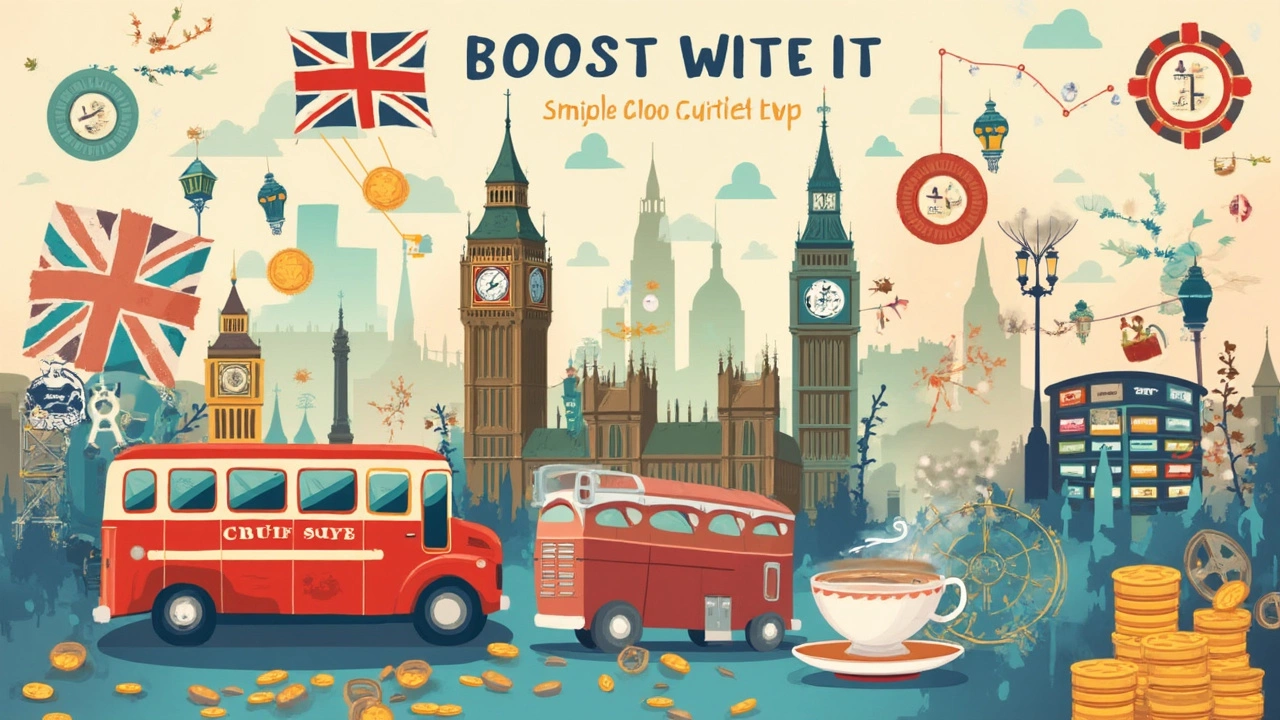Banks don’t hand out loans just because you ask nicely. They check your credit score—basically, a number that shows how good you’ve been with money. This one number can make the difference between getting the cash you want or walking away empty-handed.
If you’re feeling lost about what score is good enough, you’re not alone. Around 1 in 5 loan applicants had no clue what score they needed last year, based on a LendingTree survey. Let’s clear it up: most banks look for a minimum credit score between 580 and 660 for a basic personal loan. Want a lower interest rate or a bigger loan? You’ll need to creep closer to 700 or even higher.
Don’t beat yourself up if your score isn’t perfect. Plenty of people get approved every day with “fair” or even “poor” scores—though the deals aren’t nearly as sweet. The higher your score, the less you’ll pay in interest. Even a 20-point jump can save you hundreds or thousands over the life of a loan.
- Why Credit Scores Matter So Much
- The Magic Number: What Lenders Are Looking For
- What If Your Score Isn’t Perfect?
- How Your Score Changes Loan Offers
- Quick Tips to Improve Your Odds
Why Credit Scores Matter So Much
If you’re applying for a bank loan, your credit score isn’t just another number—think of it as your financial reputation scorecard. Banks use it to predict how likely you are to pay them back on time. FICO and VantageScore are the two main scoring systems, ranging from 300 (pretty rough) all the way up to 850 (gold star territory).
Here’s the real deal: Banks care a LOT about their risk. A low credit score signals you might miss payments or default. High scores tell banks you’re reliable and probably worth the risk. That's why a few points up or down can change the answer from "yes" to "no" in seconds.
Your credit score isn’t pulled out of thin air. It comes from your credit report: payment history, how much debt you have, length of credit history, types of credit, and recent applications all combine in the algorithm soup. Payment history makes up the biggest slice—about 35% of your FICO score. If you’re always late, banks notice.
| Factor | Weight on FICO Score |
|---|---|
| Payment History | 35% |
| Current Debt | 30% |
| Length of Credit History | 15% |
| Credit Mix | 10% |
| New Credit | 10% |
Most banks want borrowers with a score over 600. Sure, you still might get a personal loan with less, but rates get ugly fast. The difference between a 620 and a 740 credit score could mean you’re paying twice as much in interest. That’s not pocket change over a few years.
Some online lenders and credit unions care less about the score and more about your story or income. But big banks? They’re usually laser-focused on that three-digit score.
The Magic Number: What Lenders Are Looking For
If you’re searching for the “right” credit score for a bank loan, here’s what matters: most banks set 660 as a sort of magic line. Hit 660 and the door opens for a lot of personal loans. But there’s more to it. Scores above 700 are where the best rates and bigger offers start showing up. Under 580? Honestly, you’re looking at either a flat-out “no” or a loan that’s so expensive it probably doesn’t make sense.
Banks use the FICO scoring model most often (that’s the one from 300 to 850). Here’s a quick look at typical cut-offs:
| Credit Score Range | Loan Approval Odds | Interest Rates |
|---|---|---|
| 300-579 | Very Unlikely | Very High |
| 580-659 | Possible, but Tough | High |
| 660-699 | Likely | Average |
| 700-749 | Very Likely | Good |
| 750-850 | Almost Certain | Best |
If your score hovers around 660, most mainstream banks will give your application a real look. Fall below that, and your options shrink. Above 700, and you’re in a much stronger spot—banks start competing for your business, not the other way around.
This isn’t just about hitting a number. Lenders also check a few more things, like your income, job stability, and debt payments. But that credit score is what gets your foot in the door for a bank loan or a better deal on any personal loans. Think of 660 as your basic minimum, and 700 as your ticket to better perks.

What If Your Score Isn’t Perfect?
You don’t need a spotless record to get a bank loan. Sure, having a high credit score makes things easier, but even those with less-than-ideal scores still have options. A lot of banks and lenders actually offer personal loans to people with scores as low as 580. That’s considered “fair” or “subprime” territory, but it’s not a dead end.
Here’s the catch: with lower scores, you’ll likely face higher interest rates, and you might not get as much money as you want. Some banks also tack on extra fees or shorter repayment terms. The deals aren’t as friendly, but at least the door’s not shut. I had to break this down for Rory when he asked why his friend got different rates for the same loan—this is exactly why.
Sometimes you get hit with a rejection. If that happens, don’t panic. You can:
- Try a secured loan (using something valuable, like a car, as collateral)
- Look for lenders who specialize in “bad credit” personal loans
- Add a co-signer with a stronger credit score
- Apply with local credit unions—they’re often more flexible than big banks
Just for a quick glimpse, check out this real-world snapshot from Experian:
| Score Range | Approval Odds |
|---|---|
| 300-579 (Poor) | Low chance, higher rates |
| 580-669 (Fair) | Possible, watch for fees |
| 670-739 (Good) | Likely, better terms |
| 740-850 (Very Good/Excellent) | High chance, lowest rates |
It’s not just about getting approved for a personal loan. It’s about picking a path that won’t empty your wallet with sky-high interest or fees. And hey, everyone starts somewhere. If you’re rebuilding, small steps count. Just don’t let a “not perfect” score talk you out of trying.
How Your Score Changes Loan Offers
Your credit score is like a backstage pass—or a bouncer—when it comes to bank loan offers. Banks basically split customers by score and tailor their offers to match how risky they think you are. The difference can be huge, both in what you pay and what you get.
Banks will usually sort applicants into chunks: poor, fair, good, very good, and excellent. Here’s why that matters—someone with an excellent score (say, 760 or higher) might score an interest rate half as high as someone with a score of 600. To see what that looks like, check out this sample table based on 2024 numbers:
| Credit Score | Average Interest Rate | Loan Amount Eligibility |
|---|---|---|
| 760+ | 8% - 10% | Up to $50,000 |
| 700-759 | 10% - 13% | Up to $40,000 |
| 660-699 | 13% - 17% | Up to $30,000 |
| 620-659 | 18% - 25% | Up to $15,000 |
| 580-619 | 26%+ (if approved) | Up to $5,000 |
As you can see, scoring just 30 or 40 points higher can mean the difference between paying thousands extra or getting a much bigger loan. For example, over five years, someone borrowing $10,000 at 10% pays about $2,748 in interest. At 22%, they’d pay $6,383. That’s a brutal difference.
It’s not just about the rates, either. With a stronger credit score, banks might offer you things like lower fees, bigger loan amounts, and even longer time to pay. Fall on the lower end, and you sometimes need a co-signer or even collateral, just to get approved.
- If your score is in the "fair" or "poor" zone, banks may also add origination fees (typically 1%-8% of your loan).
- Some banks flat out won’t lend below 620, and the ones that do often put hard limits on the amount you can borrow.
Always check your loan offer details and run the real numbers before you say yes. Two offers that look similar on paper can cost wildly different amounts after fees and interest get added in.

Quick Tips to Improve Your Odds
If you’re hoping to boost your credit score before you apply for a bank loan, here are hands-on moves that actually work. These aren’t pipe dreams—just stuff you can start right now, without being a finance expert.
- Pay your bills on time. This is the single biggest factor for your score, making up about 35% of it. Set reminders or use autopay to avoid accidental slip-ups.
- Lower your credit card balances. Keep your usage under 30% of your total credit limits. If you owe $1,500 on all cards but your total limit is $6,000, that’s a 25% usage rate—right in the sweet spot.
- Don’t open a bunch of new cards at once. Every credit check dings your score a bit. Spreading out those applications is smarter if you need new credit.
- Ask for a credit limit increase instead of opening new cards. If your bank says yes, your available credit rises and your usage drops—no new hard inquiry needed.
- Dispute errors on your credit report. Around 1 in 5 people find mistakes when they check. Go to AnnualCreditReport.com for free access and flag any errors right away.
Here’s a quick look at just how much these steps matter. Banks really notice even small shifts in your credit score:
| Credit Score Range | Typical Loan APR | Loan Approval Odds |
|---|---|---|
| 720+ | 8% - 12% | Very High |
| 660 - 719 | 12% - 18% | High |
| 600 - 659 | 18% - 25% | Medium |
| Below 600 | 25%+ | Low |
Give yourself a few weeks (or even a couple of months) with these tips and you can often see a real jump in your credit score. The better your score, the more likely you’ll get that bank loan—and at way better rates.

